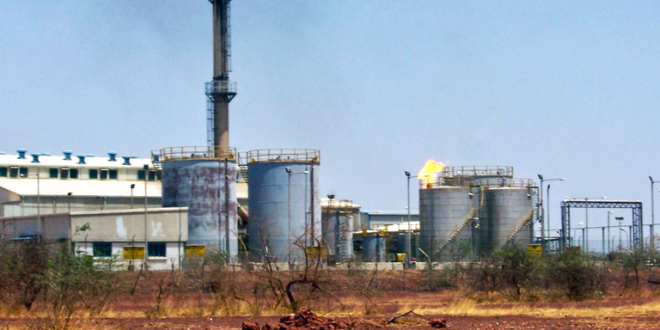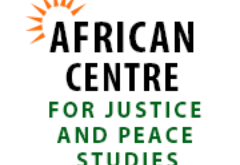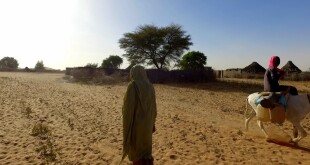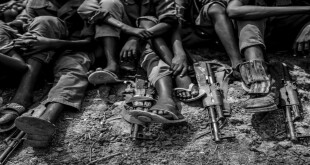1 December 2023,
The African Centre for Justice and Peace Studies (ACJPS) has continued to monitor the situation in Sudan since the outbreak of armed conflict in April 2023. ACJPS has documented incidents that have changed the trajectory of the conflict from the power struggle that it was at the beginning of the conflict to the scramble for resources.
Strategic capture and control of significant locations by RSF
The ongoing armed conflict in Sudan is quickly accelerating as the Rapid Support Forces (RSF) takes control of new areas, either following the defeat of the Sudanese Armed Forces (SAF) in a gunfight or upon the voluntary withdrawal of SAF from the sites. The month of October 2023 marked the beginning of a new phase in the war, especially after RSF took over the 16th Division in Nyala, South Darfur, and the withdrawal of the Sudanese army from the said base as confirmed by the appearance of Major General Hussein Jadat, the RSF commander at Wadi Sayedna base in Madman. SAF has continued to withdraw from several bases across Sudan including the 21st Division in Zalingi, Central Darfur which was preceded by RSF’s seizure and control of Amdavoc, Manwashi, Kasi garrisi, Kasi, Salia, Hamiya Garrisi, Garrison Garrisi, and Garrison Arte. The situation gives RSF broad access to South Sudan from South and East Darfur leading to recapture of the 20th Division in Al-Daein and the two Garrisons of Adila and Abukaritka in East Darfur. The distance between Samaha (the last city in East Darfur) and Quq Machar in South Sudan is 160-180km.
The RSF also announced the capture and control of other areas in West Kordofan following the seizure of Al-Mujlad Garrison on 25 November 2023. Currently, there is controversy surrounding the 6th Brigade in El-Fasher, North Darfur as there are private negotiations aimed at handing it over to the parties/movements of the Juba Peace Agreement, 2020. However, the process may be delayed due to the political positions of the said movements and their relationship with the Sudanese Armed Forces (SAF) and RSF. It is also unlikely that RSF will heed to national, regional, and international calls to protect civilians in El-Fasher, where some former leaders of armed movements have been residing since 2003.
The current political and military maneuvers indicate that RSF will most likely capture and control the 5th Division in El-Obeid city, as it provides RSF access to control El-Fasher city and its Garrison. This can be confirmed by RSF’s action of deploying troops in the northeast in areas near the River Nile and the Northern states.
This reality reinforces the theory/assumption that RSF can gain control of the Kordofan and Darfur states with the exception of the People’s Movement, which is now controlling areas in South Kordofan. It is alleged that the RSF Commander has been working on keeping a good relationship with South Sudan concerning the Abyi area plan at least since September 2022 and has a relationship with the Government of South Sudan which will help to further his agenda.
The quest for resources
The RSF initially controlled the El Ailafun fuel station before moving on to the Belila field in West Kordofan and later advancing to fields in East Darfur. Additionally, they took control of the El Jaili refinery in Khartoum North on the first day of the conflict.
RSF is currently struggling to gain full control of other significant areas like the Republican Palace in Khartoum and extending its access to Central Africa and the Chadian border of Adri. It has become evident that the RSF is implementing a plan to secure ongoing supply for its forces while also enforcing a blockade to cut off supplies from army garrisons. According to recent reports, the majority of these garrisons have not received any supplies for at least six months.
The above context aims to explore RSF’s strategy in light of the failure of the Jeddah peace talks to reach a short or medium cessation of hostilities. The strategy encompasses the whole of Sudan in the long term but is currently focused on the two regions of Kordofan and Darfur in the short and medium term. This strategy aims to control the oil fields of West Kordofan, East Darfur, and the Abyei region as well as the Arabic Gum and Hibiscus fields located between West Kordofan and East Darfur. RSF is also interested in the peanut-producing areas of Krinik in West Darfur, East Nyala, and East Darfur. Additionally, all these states have gold mining fields whilst Darfur and Kordofan have livestock markets dealing in the best quality Hamari goats, camels, and horses from Kabkabiya in North Darfur among other resources.
Other developments
In September 2023, Rahma Mahdi also known as Abu Jalaha joined the conflict alongside RSF. Mr. Rahma previously advocated for the RSF on social media while he was participating in the conflict in Libya, where he gained popularity. Mr. Hussein Barsham also preceded Abu Jalaha and joined RSF. Both Mr. Rahma and Mr. Hussein belong to the Misseria tribe which inhabits West Kordofan. In May, Mr. Rizq Allah also known as Savannah, a descendant of southern Rizeigate cowboys in East Darfur also joined the RSF. Mr. Savannah was previously affiliated with the armed militia in Darfur and subsequently joined the armed forces under the security arrangements.
Conclusion
Regardless of who fired the first bullet, the war in Sudan has evolved from a power struggle to a battle over resources. It may signal significant and far-reaching changes in the situation. The idea of Darfur and Kordofan seceding is far from RSF plans at least for now, because whoever gains control of the main resources (found in the said states) will most likely seek control over the entire country excluding the thought of secession. This assumption is supported by the course of the conflict since August 2023, with the introduction of advanced weapons, vehicles, and other equipment into the war.
By Mohamad Badawi
ACJPS Director of Monitoring and Documentation
 African Centre for Justice and Peace Studies ACJPS | المركز الافريقي لدراسات العدالة و السلام
African Centre for Justice and Peace Studies ACJPS | المركز الافريقي لدراسات العدالة و السلام




